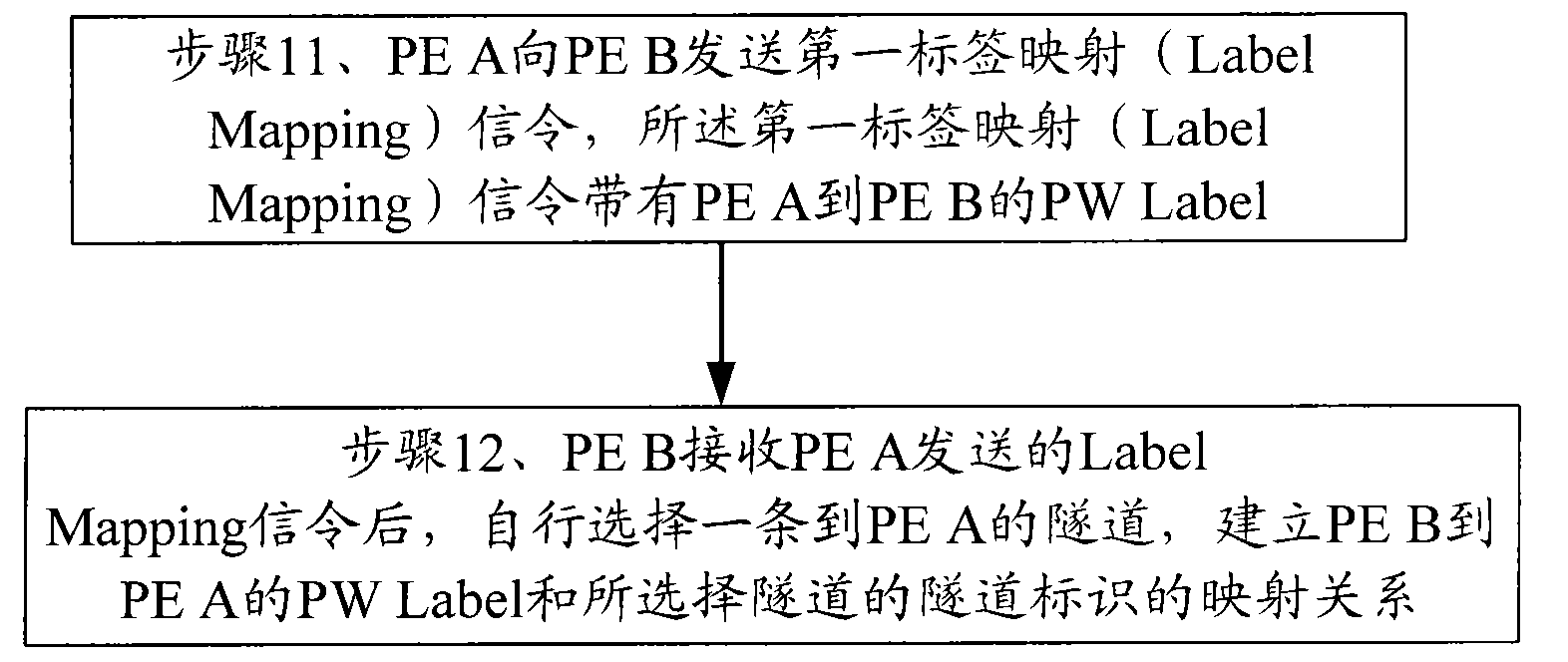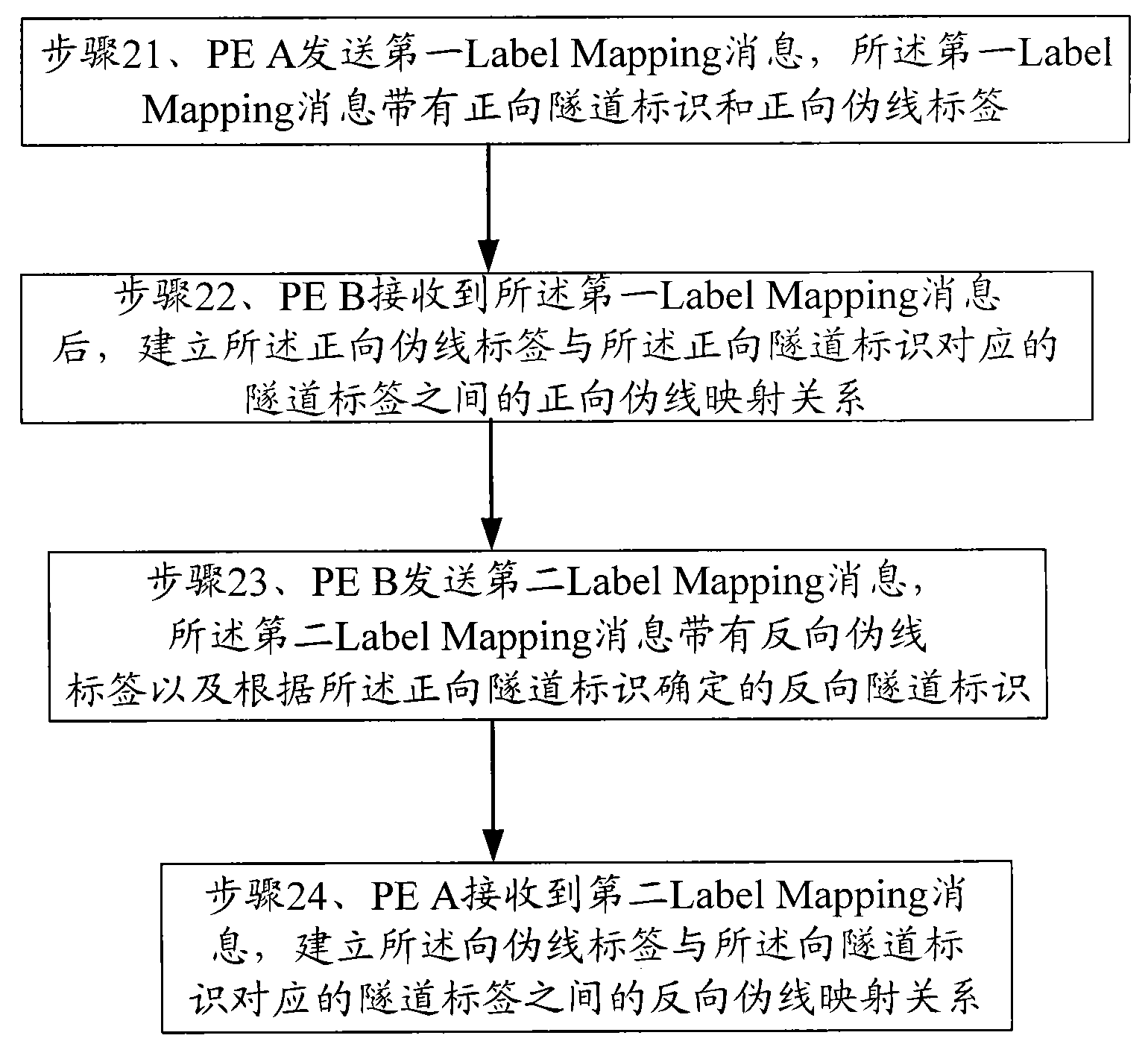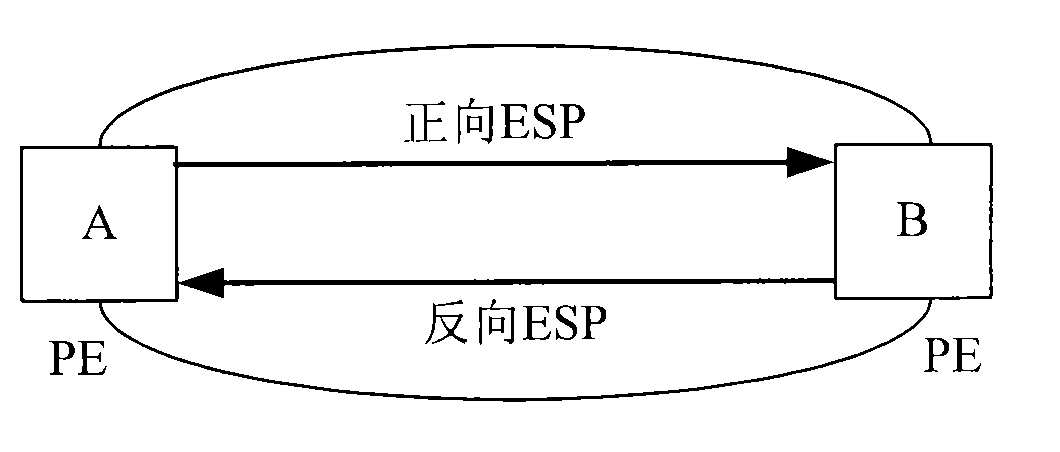Method and device for establishing pseudowire mapping
A pseudowire and mapping relationship technology, applied in the field of communication, can solve the problems of occupying bandwidth, unable to guarantee the consistency of two-way service delay, etc., and achieve the effect of saving bandwidth
- Summary
- Abstract
- Description
- Claims
- Application Information
AI Technical Summary
Problems solved by technology
Method used
Image
Examples
Embodiment 1
[0030] Embodiment 1: The specific implementation of the present invention provides a method for establishing pseudowire mapping. For the convenience of description, let the first node be PE A, and the second node be PE B. The specific steps of the method are as follows figure 2 shown, including:
[0031] Step 21, PE A sends a first Label Mapping message, and the first Label Mapping message has a forward tunnel identifier and a forward pseudowire label;
[0032] The first Label Mapping message in this step has the implementation method of forward tunnel identification can be to increase the tunnel identification domain in the false wire identification type length value (Pseudowire identifier Type, Length, Value, PWid TLV) object of Label Mapping message, The tunnel identifier field is used to carry the forward tunnel identifier. Of course, the tunnel identifier can also be loaded in other positions of the first Label Mapping message. The specific embodiment of the present inve...
Embodiment 2
[0042] Embodiment 2: A method for establishing a pseudowire mapping provided by a specific embodiment of the present invention. The technical scenario of this embodiment is that this embodiment establishes a pseudowire mapping in PBB-TE. The tunnel label is ESPID, and the pseudowire The label is I-SID. In this embodiment, the pseudowire mapping in the direction from PE A to PE B is set as forward pseudowire mapping. Of course, it can also be set as reverse pseudowire mapping. PE A and PE B in this embodiment connections such as image 3 shown. The method described in embodiment 2 is as Figure 4 shown, including the following operations:
[0043] Step 41, PE A sends to PE B the first LabelMapping message with forward ESP ID and forward I-SID;
[0044] The forward ESP ID in the above steps can specifically be , wherein MAC_A and MAC_B are the MAC addresses of nodes PE A and PE B respectively, and B-VID1 is a VLAN identifier. The I-SID in this step is a pseudowire label assi...
Embodiment 3
[0051] Embodiment 3: A method for establishing a pseudowire mapping provided by a specific embodiment of the present invention. The technical scenario of this embodiment is that the pseudowire establishment in this embodiment is established between PE A and PE in an MPLS / T-MPLS network. Established between PEs B, the connection between PE A and PE B on the MPLS network is as follows: Figure 5 As shown in , the tunnel identifier is LSP ID, the pseudowire label is MPLS PW Label, and the pseudowire mapping from PE A to PE B is defined as forward pseudowire mapping. For MPLS / T-MPLS networks, when the tunnel ID is an LSP ID, a bidirectional LSP will have a corresponding LSP ID on the management or control plane. At this time, the forward LSP ID and the reverse LSP ID are actually the same LSP ID , that is, the forward tunnel ID at this time is the same as the reverse tunnel ID corresponding to the tunnel ID, but for the convenience of description, this embodiment divides the LSP I...
PUM
 Login to View More
Login to View More Abstract
Description
Claims
Application Information
 Login to View More
Login to View More - R&D
- Intellectual Property
- Life Sciences
- Materials
- Tech Scout
- Unparalleled Data Quality
- Higher Quality Content
- 60% Fewer Hallucinations
Browse by: Latest US Patents, China's latest patents, Technical Efficacy Thesaurus, Application Domain, Technology Topic, Popular Technical Reports.
© 2025 PatSnap. All rights reserved.Legal|Privacy policy|Modern Slavery Act Transparency Statement|Sitemap|About US| Contact US: help@patsnap.com



